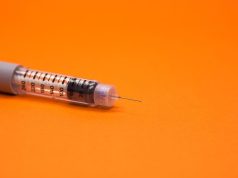Improvement seen in treatment satisfaction and several secondary end points for depot buprenorphine versus sublingual buprenorphine
TUESDAY, May 11, 2021 (HealthDay News) — Participants with opioid dependence receiving subcutaneously administered depot buprenorphine have improved treatment satisfaction compared with those receiving sublingual buprenorphine, according to a study published online May 10 in JAMA Network Open.
Nicholas Lintzeris, M.B.B.S., Ph.D., from South Eastern Sydney Local Health District, and colleagues conducted an open-label randomized trial among adult patients with opioid dependence at six outpatient sites from October 2018 to September 2019. A total of 119 participants were enrolled and randomly assigned to receive weekly or monthly depot buprenorphine or daily sublingual buprenorphine over 24 weeks (60 and 59 patients, respectively).
The researchers found that at week 24, the mean Treatment Satisfaction Questionnaire for Medication global satisfaction score was significantly higher for the depot group versus the sublingual group (mean, 82.5 versus 74.3). After treatment with depot buprenorphine, improved outcomes were observed for several secondary end points. A total of 117 adverse drug reactions were experienced by 39 participants (65.0 percent) in the depot buprenorphine group, while 12 participants (20.3 percent) in the sublingual group experienced 21 adverse drug reactions.
“Results of this study consistently demonstrated the superiority of the extended-release injectable buprenorphine versus the daily oral formulation across many outcomes,” write the authors of an accompanying editorial. “Of note, the study also found no difficulty in transitioning patients who were receiving oral buprenorphine to the extended-release formulation, a finding that has not been emphasized previously in the literature.”
Several authors disclosed financial ties to pharmaceutical companies, including Camurus AB.
Copyright © 2021 HealthDay. All rights reserved.








